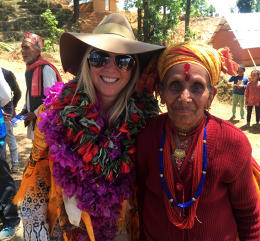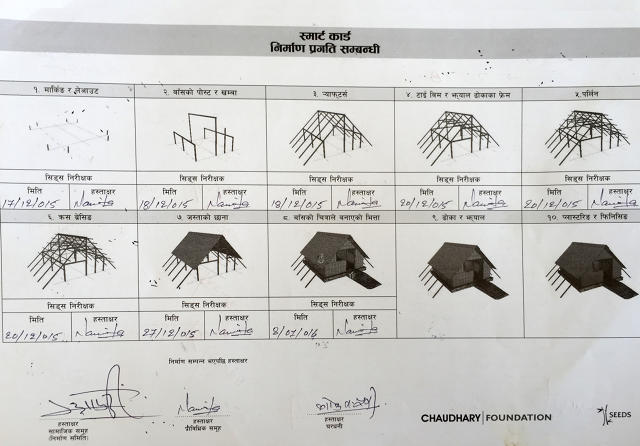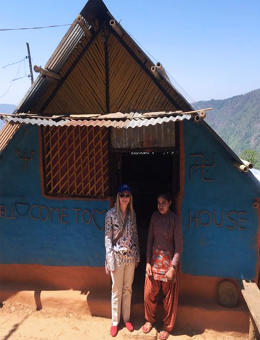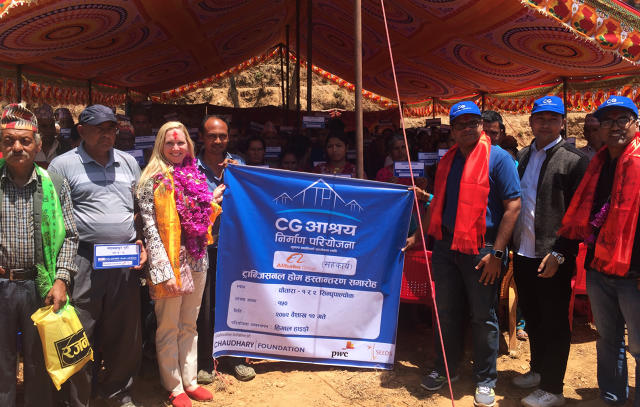How Rebuilding After The Nepalese Earthquakes Taught Me To Manage Work Crises
Sloane Menkes is no stranger to crises.
The former U.S. Air Force first lieutenant and current global crisis center leader for PricewaterhouseCoopers helps clients deal with situations that disrupt business as usual, advising them on how to identify and gather the resources and knowledge necessary to respond.
Menkes recently spent some time in Nepal helping to rebuild homes destroyed in a pair of 7.3 and 7.8 magnitude earthquakes in 2015 that killed more than 8,000 people and left another half a million families without homes. During her time in Nepal this past April, Menkes witnessed the resiliency of the local population as she assisted in the rebuilding effort.
“Crises can have many definitions and come in many different forms,” she tells Fast Company.
Here are a few lessons her experience in Nepal taught her about managing any business crises.
1. Maintain Clearly Defined Roles
Menkes explains that during a crisis everyone wants to contribute something to the relief effort, but without clearly defined roles those resources will overlap or otherwise not be used to their fullest extent.
“When clients are in crisis everyone wants to pile on and solve the problem,” Menkes says. “I try and help clients understand the importance of the roles that they play in a crisis,” she explains, “and disentangle those roles so people can make decisions and weed out misinformation and have respect for what each person can contribute.”

For example, Menkes said that many of the villages in Nepal had elected a project manager, who was responsible for checking the quality of each home as it was being built. A village elder prioritized whose homes were to be built first.
“I think back to how the local villagers managed and prioritized who would get the homes, and then in a crisis how you’re prioritizing and managing different people’s activities, I see that inspiring what I do for my clients,” she says.
2. Use The Resources You Have Available
When the Nepalese began rebuilding following the earthquakes of April 27 and May 12, 2015, they used the resources that were most readily available. Since that time, over 2,750 homes have been built using bamboo, a small amount of aluminum sheeting, and 18 buckets of mud.

“18 buckets of mud changed these people’s lives,” she said. “That was one of the key things that I took away and use in my professional life,” says Menkes. Getting clients to understand that sometimes they already have resources available to make things happen doesn’t have to be a challenge, she says. “You may not have to look too far, if you’re creative, to find those resources,” Menkes asserts.
3. Make Plans
When a crisis hits, you don’t want to be caught unprepared, without any predefined roles, or considerations of how to move forward, says Menkes. She advises organizations to prepare a crises management plan that identifies all of the resources they have readily available, as well as where to find those that aren’t.

“Do they know who they will rely on should a crisis hit?” she asks. “Sometimes that’s the resources and talent they have in-house, and sometimes they need to look beyond,” Menkes says. “Crises simulations (tabletop exercises that simulate a crisis) allow the client to exercise their response plan, but also helps clients see the importance of respecting those roles the same way I saw that happening in the villages.”
4. Prepare To Abandon Those Plans
In spite of having those plans readily available, however, Menkes warns that a crisis, by its very nature, will require some on-the-fly adjustments.
For example, Menkes explains that the bamboo and mud homes that were being built in Nepal had to be adjusted in some of the 14 hardest-hit districts to respond to their unique climates.
“The villagers modified the design without having to modify the materials in a large way,” she says, explaining that the villagers had to use the equivalent of a sealant to strengthen the bamboo in certain districts. “Your best-laid plans may not survive reality,” she admits. “You have to rely on your plans,” Menkes adds, “but be ready to modify them so that in the midst of a crisis you’re still able to respond and recover.”

5. Show Resilience
Though there were many lessons Menkes brought back from Nepal, what stuck out to her the most was the resilience and perseverance demonstrated by the villagers as they adjusted to life following the disaster.
Though buildings, homes, and monuments lay in ruins, Menkes says that the local population learned to adjust, and carried on living their lives among the rubble.
Menkes says that she’ll never forget the pride and spirit of the Nepalese she encountered when she arrived. “When clients encounter crises, they have to get back to business as usual or get back to the new normal that exists on the other side,” she observes. “It’s kind of like living among the rubble of what has happened, and figuring out a way to survive and thrive.”
Fast Company , Read Full Story
(27)


